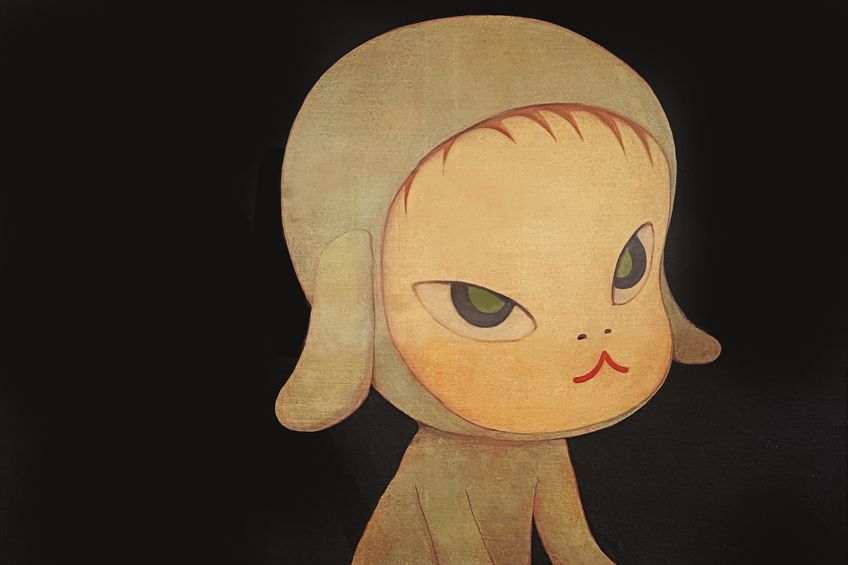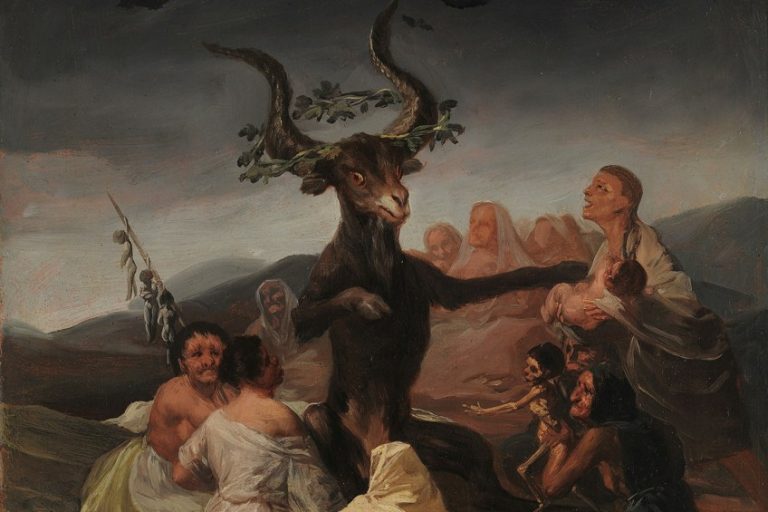Yoshitomo Nara – A Look at Contemporary Japanese Pop Art
Yoshitomo Nara stands as a luminary in contemporary Japanese art, renowned for his distinct blend of innocence and edginess in his works. With roots in pop culture and a deep connection to childhood memories, Nara’s art evokes a sense of nostalgia while also delving into complex emotions and societal themes. From his iconic big-eyed characters to poignant sculptures, Nara’s artistic journey has garnered international acclaim, making him a celebrated figure in the global art scene.
Key Takeaways
- Yoshitomo Nara is a prominent contemporary Japanese artist with a focus on themes of childhood and rebellion.
- His work is globally recognized and is included in major art museums like MoMA and LACMA.
- Nara’s legacy and the preservation of his art are supported by the Yoshitomo Nara Foundation.
Biographical Background
| Birth | December 5, 1959 |
| Death | Present |
| Place of Birth | Hirosaki, Japan |
| Genre of Work | Contemporary art, Pop art, Neo-Pop art, and Superflat art |
Yoshitomo Nara is a Japanese artist known for his striking and expressive works that often incorporate themes of childhood, rebellion, and emotion. Born in Hirosaki, Aomori Prefecture, Japan, Nara has carved out a significant place in the contemporary art scene. His art is distinctive for its cartoon-like children and animals, which may seem innocuous at first glance, but often carry a deeper sense of angst and defiance. Nara’s characters, with their oversize heads and enigmatic expressions, have captured the imagination of a global audience.
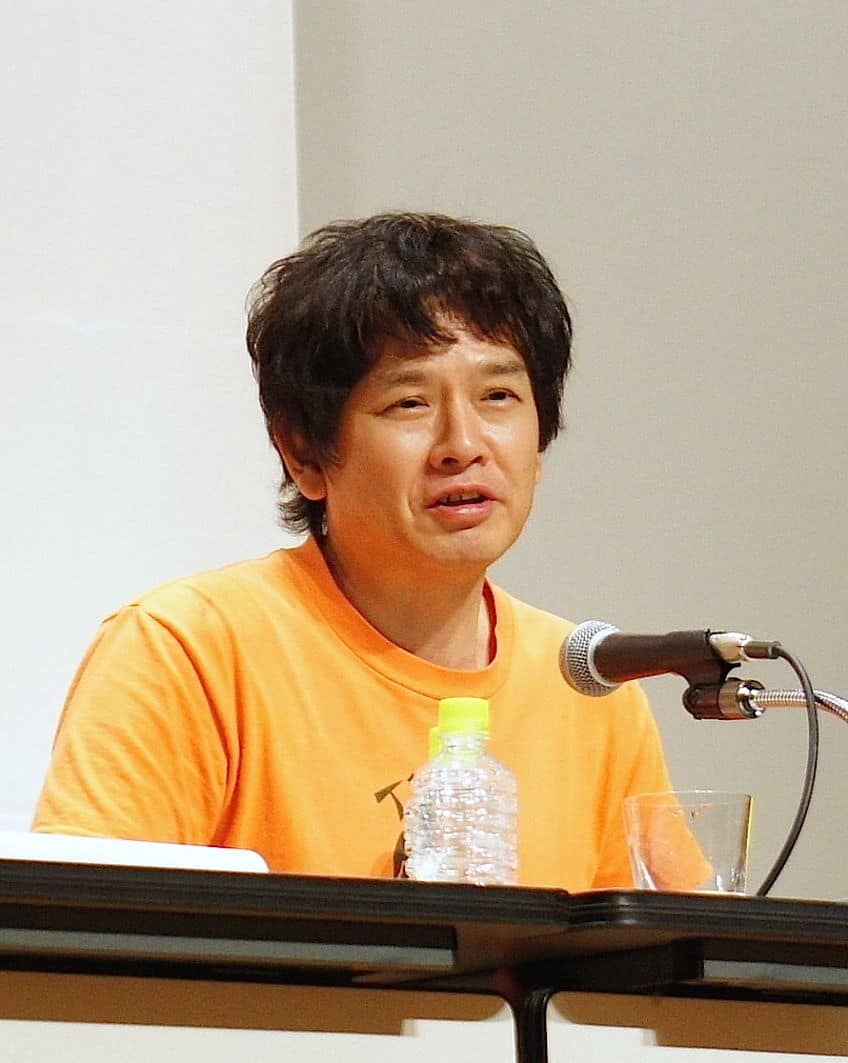
Having worked and exhibited extensively since 1984, Nara’s body of work is diverse, including paintings, drawings, and sculptures. His style is influenced by a range of elements from Eastern and Western cultures, including traditional Japanese art, Western pop culture, literature, and music. Nara’s pieces are housed in prominent collections worldwide, such as the Museum of Modern Art (MoMA) in New York and the Los Angeles County Museum of Art (LACMA). In addition to creating art, Nara is dedicated to preserving and documenting his work through the Yoshitomo Nara Foundation, ensuring that the information and access to his art are maintained for future generations.
Early Life and Education
Yoshitomo Nara was born on December 5, 1959, in Hirosaki, a city located in the Aomori Prefecture of Japan. Nara’s educational journey in the arts began with a master’s degree from Aichi University of the Arts in 1987.
Pursuing further refinement of his craft, he moved to Germany in 1988 to study at Kunstakademie Düsseldorf.
Influences and Inspirations
Music played a pivotal role in shaping Nara’s artistic sensibility. The melodies and countercultural vibes of punk rock and folk music permeated his work, infusing it with a sense of defiance. His time in Germany allowed him to absorb European artistic methods and philosophies, which combined with his Japanese heritage, resulted in a unique, cross-cultural aesthetic.
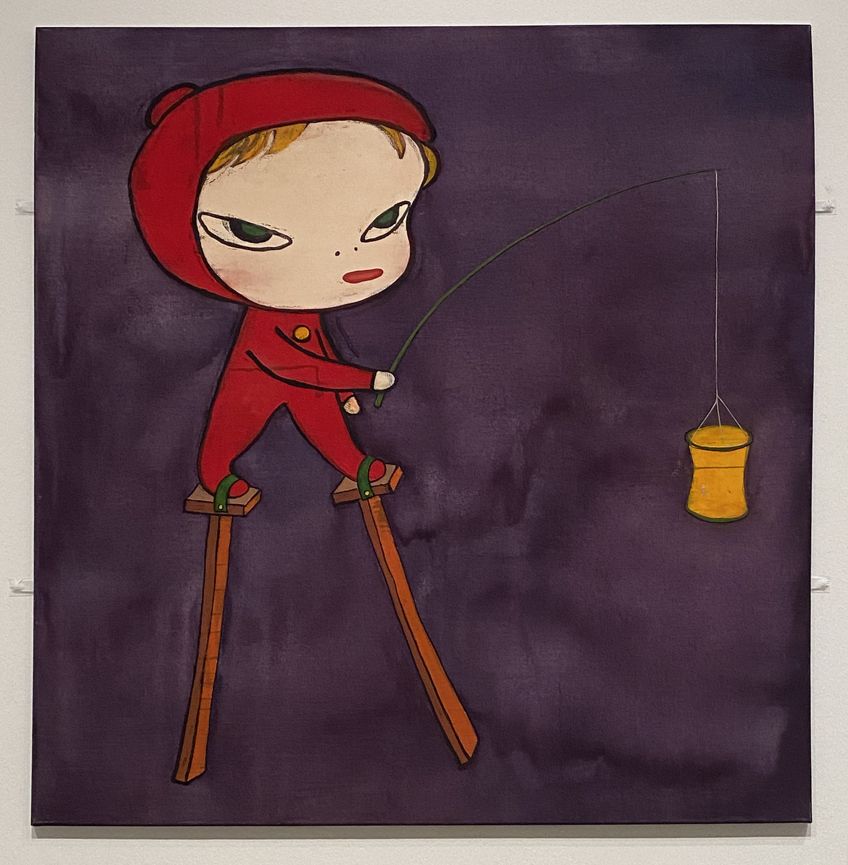
Current Career
Upon returning to Japan in 2000, Nara established himself in the contemporary art scene. His works have been widely exhibited in major cities across Europe, the United States, Japan, and Asia, capturing global attention. Presently, Nara lives and works in Nasushiobara, located in Tochigi Prefecture.
He continues to create art that connects with audiences worldwide, featured in prominent institutions like the Museum of Modern Art (MoMA) and the Los Angeles County Museum of Art (LACMA).
Artistic Style and Themes
Yoshitomo Nara’s art is distinctive, marked by child-like figures and a fusion of pop culture elements with fine art introspection. His work has evolved significantly over the years, retaining a strong sense of emotional depth and cultural commentary.

Evolution of Art and Signature Style
Yoshitomo Nara has undergone a notable evolution from his early work primarily in drawings and paintings to his more comprehensive exploration of sculptures. His signature style is characterized by cartoonish characters that draw inspiration from manga and comic books, which can often be found on unconventional materials like paper, ink, and canvas.
Nara’s work is simple yet profound, typically portraying solitary children and animals that fuse kawaii aesthetics with an undercurrent of defiance.
Recurring Motifs and Cultural References
In many of his works, common motifs include introspective children and whimsical animals, often with oversized heads and piercing expressive eyes. These motifs straddle the innocence associated with kawaii culture and deeper existential themes. Nara frequently incorporates elements of rock and punk music culture, as seen in his subjects occasionally wielding objects like cigarettes or wearing collars and chains, adding an edge to his otherwise innocent characters. This blend of innocence with rebellion underscores Nara’s unique cultural lexicon, where Japanese tradition meets Western influences.
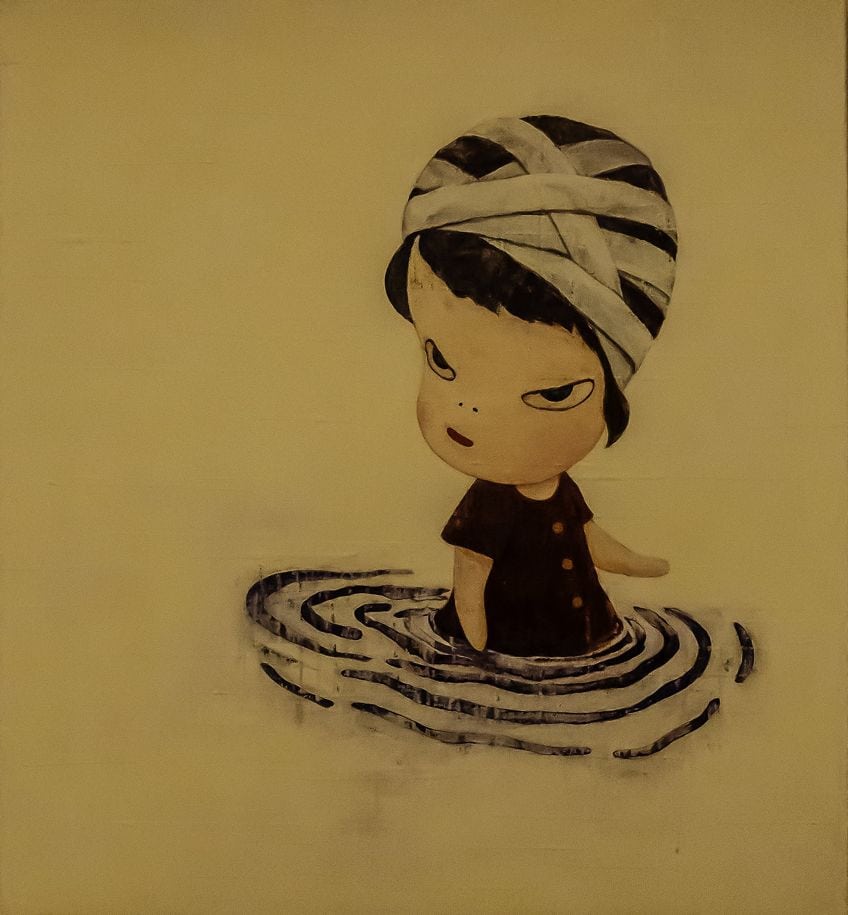
Themes of Rebellion and Individuality
Underlying Nara’s body of work is a persistent theme of rebellion and individuality. Through a lens that is both introspective and existential, his figures often convey a sense of contemplation or defiance, turning them into emblems of personal and collective identity. Despite their kawaii appearance, the expressions of Nara’s subjects are complex, covering a spectrum of emotions and often reflecting the artist’s own views on society and the self.
The recurrent theme of youthful revolt and the subtle undermining of societal norms are evocative of Nara’s punk ethos, suggesting a deep connection between the visual and musical rebellions in his art.
Notable Works and Collections
Yoshitomo Nara’s artistry spans various mediums, including paintings, sculptures, and ceramics, and has been showcased in numerous prestigious venues globally. His creations are a blend of fine and modern art, often infused with elements from popular culture and music.

Major Works and Exhibits
- Paintings: Exemplary works include Do Not Disturb! (1996), showcasing his characteristic motifs of children and animals with a blend of innocence and subversive undertones.
- Exhibits: He has headlined nearly 40 solo exhibitions since 1984, demonstrating his impact on the contemporary art scene.
Permanent Collections and Galleries
- LACMA: His works are a part of prominent collections, such as the Los Angeles County Museum of Art.
- Foundation: The Yoshitomo Nara Foundation is pivotal in maintaining and promoting his extensive catalog of art.

Collaborations and Publications
- Ceramics: Beyond his paintings and sculptures, Nara has ventured into the realm of ceramics, further diversifying his artistic oeuvre.
- Publications: A comprehensive archive of his bibliographic information and art is curated by the foundation dedicated to his works.
International Recognition and Exhibitions
- Global presence: Yoshitomo Nara’s artwork enjoys international acclaim, having been housed at leading museums like MoMA and featured in exhibitions funded by institutions including the LACMA Exhibition Fund.
- Images: His art frequently circulates in the public domain, with images of his work widely appreciated and disseminated.
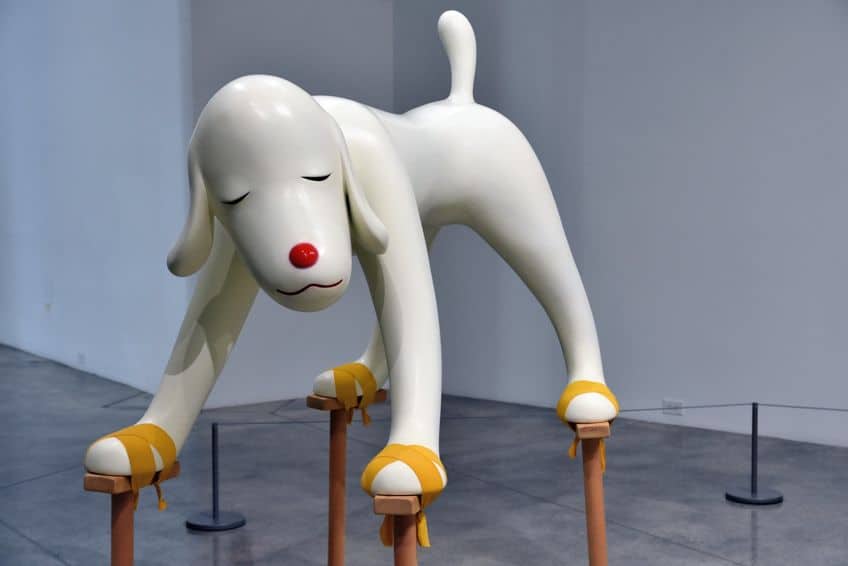
Foundation and Legacy
Yoshitomo Nara’s contributions to modern art extend beyond his individual works. His establishment of a dedicated foundation and the influence his art has on the contemporary scene are testaments to his enduring legacy. The Yoshitomo Nara Foundation was set up to ensure lasting access to Nara’s art and accurate information about his works for both Japanese and international audiences. Rights reserved and copyright policies are enforced to protect his creations.
The Foundation focuses on archiving and publishing detailed information about the artist and facilitates viewing opportunities for Nara’s pieces.
Impact on Contemporary Art
Nara’s impact on contemporary art is significant. His stylistic elements have been part of the broader neo-expressionist movement and his influence is evident in the realms of Superflat, a term coined by Takashi Murakami. This movement merges graphic design with fine art sensibilities, drawing from various sources including ukiyo-e, consumer culture, and even Western inspirations such as Keith Haring and Mark Rothko. Nara’s aesthetic bridges narratives from Brothers Grimm to Aesop, infusing a unique blend of innocence and rebellion.

Preservation of Rights and Works
Protecting the rights reserved for Yoshitomo Nara’s work, the Foundation invests in the preservation of his oeuvre. It upholds strict copyright policies, mirroring the artist’s wish to maintain the integrity of his work, much like the preservation of a fountain of life for his art.
His designs and the distinct emotive quality of his characters are preserved for future generations to study and appreciate within the context of modern art’s evolution.
Yoshitomo Nara Today
Nara continues to be an eminent figure in contemporary art. As of 2024, his distinctive style still resonates in the global art community. Nara’s work often features mischievous children and animals, executed in a style that merges innocence with rebellion, creating a profound juxtaposition. His current activities include:
- Art exhibitions: Nara’s artwork continues to be showcased worldwide, with exhibitions detailing his creative journey from 1984.
- Art market presence: His pieces, such as Knife Behind Back (2000), captivate market interest, demonstrating his significance in contemporary art auctions.
The Yoshitomo Nara Foundation remains active, dedicated to compiling and providing accurate information on Nara’s oeuvre. The foundation’s remit covers his professional career since 1983 and is a testament to his ongoing relevance and impact on the art scene.
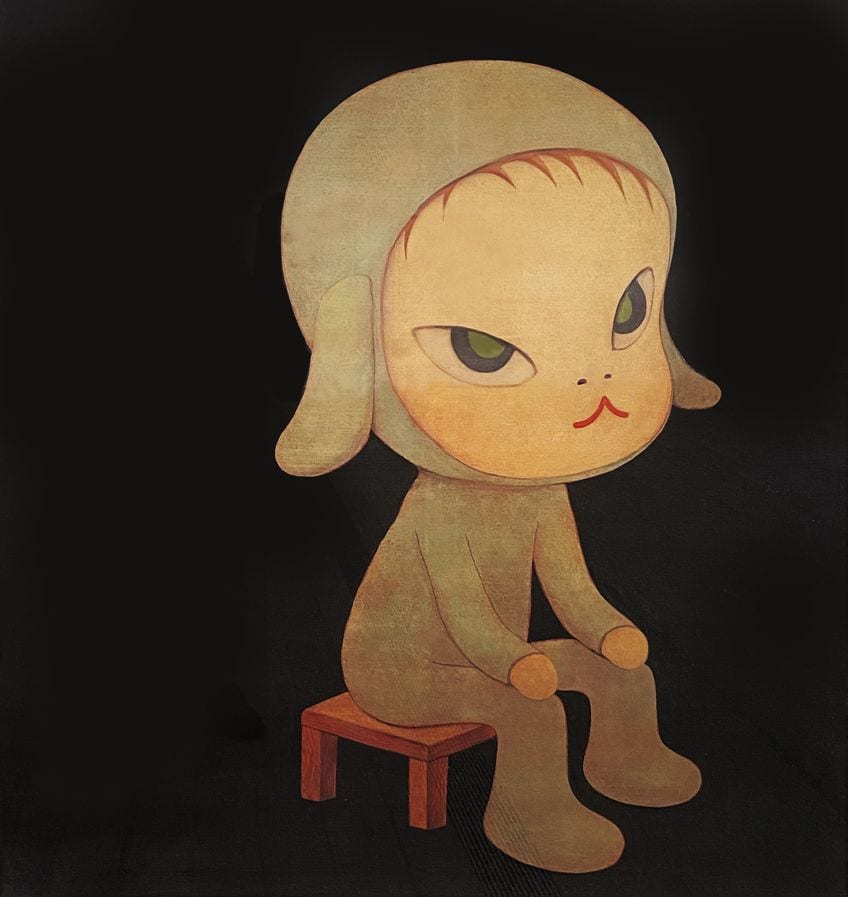
Currently living and working in Nasushiobara, Tochigi Prefecture, Japan, Nara’s influence stretches well beyond his geographical location, continually attracting new and seasoned art enthusiasts. His contribution to Superflat art, a movement that blends pop-culture aesthetics with fine art, remains a critical reference point in understanding the evolution of contemporary art in Japan and internationally.
Yoshitomo Nara’s artistic legacy extends far beyond his captivating characters and emotive compositions. Through his unique fusion of childhood innocence and introspective depth, Nara has not only captured the hearts of art enthusiasts worldwide but also sparked important conversations about identity, society, and the human experience. His ability to transcend cultural boundaries and evoke universal emotions has solidified his place as a visionary artist whose influence will continue to resonate for generations to come, shaping the landscape of contemporary art with enduring relevance and inspiration.
Frequently Asked Questions
What Are the Defining Characteristics of Yoshitomo Nara’s Art Style?
Nara is known for his portraits featuring children and animals that possess an amalgamation of innocence and latent malice. They often include large, expressive eyes and are painted with a muted color palette.
Which Pieces Are Considered Yoshitomo Nara’s Most Iconic Works?
Pieces like Knife Behind Back and Miss Forest have become iconic, showcasing Nara’s distinctive characters who often appear disquietingly serene despite sometimes holding objects like knives.
What Themes and Messages Are Prevalent in Yoshitomo Nara’s Artwork?
Nara’s work frequently explores themes of solitude, rebellion, and the complexities of emotional states through his childlike figures, reflecting the depth of human experience.
How Has Yoshitomo Nara’s Upbringing Impacted His Artistic Expression?
The solitary nature of Nara’s upbringing in post-war Japan is often reflected in the solitary and introspective nature of his characters, evoking a sense of both nostalgia and rebellion.
Isabella studied at the University of Cape Town in South Africa and graduated with a Bachelor of Arts majoring in English Literature & Language and Psychology. Throughout her undergraduate years, she took Art History as an additional subject and absolutely loved it. Building on from her art history knowledge that began in high school, art has always been a particular area of fascination for her. From learning about artworks previously unknown to her, or sharpening her existing understanding of specific works, the ability to continue learning within this interesting sphere excites her greatly.
Her focal points of interest in art history encompass profiling specific artists and art movements, as it is these areas where she is able to really dig deep into the rich narrative of the art world. Additionally, she particularly enjoys exploring the different artistic styles of the 20th century, as well as the important impact that female artists have had on the development of art history.
Learn more about Isabella Meyer and the Art in Context Team.
Cite this Article
Isabella, Meyer, “Yoshitomo Nara – A Look at Contemporary Japanese Pop Art.” Art in Context. May 6, 2024. URL: https://artincontext.org/yoshitomo-nara/
Meyer, I. (2024, 6 May). Yoshitomo Nara – A Look at Contemporary Japanese Pop Art. Art in Context. https://artincontext.org/yoshitomo-nara/
Meyer, Isabella. “Yoshitomo Nara – A Look at Contemporary Japanese Pop Art.” Art in Context, May 6, 2024. https://artincontext.org/yoshitomo-nara/.


